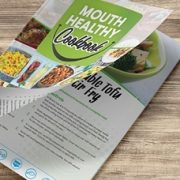Snack Food Month – Tips for Healthier and More Satisfying Snacks
By Mina Goodman, RD | Nutrition Educator
When thinking about snacking, what often comes to mind is chips, cookies, ice cream and more foods we consider to be “junk foods”. What we may not realize is that snacking can be a healthy way to keep blood sugar and energy levels steady between meals, prevent overeating at mealtimes, and provide more opportunities to get the right nutrients each day. Below are some tips for healthier snacking that are easy, delicious, and dietician approved.
- Think of snacks as small meals. Use the MyPlate model to plan your snacks. At a minimum, try to include a source of protein and a source of carbohydrate, for example an apple with peanut butter or grapes with cheese. When possible, add vegetables to the snack to add fiber, water, vitamins, and minerals to your diet.
- Make small changes to your current snacks. For example, if you like snack packs from the supermarket that include a mix of meat, cheese, nuts, crackers, or fruit, try to recreate your own healthier (and less expensive) version at home. Look for low sodium cold cuts, low fat cheese, unsalted nuts, berries, and high fiber or whole grain crackers.
- Enjoy a variety of healthy snacks. Check out NOAH recipes or speak with a dietitian at NOAH for personalized snack ideas.
Here are some examples to get you started!
- 2 Tbsp hummus with 1 cup cucumbers, carrots, grape tomatoes and/or celery sticks
- 4 dates with 1/4 cup almonds
- 2 Tbsp natural peanut butter with 2 celery stalks and raisins (ants on a log)
- 1/4 cup salsa and 1/3 cup cooked quinoa
- 1/2 cup low sodium cottage cheese with fresh tomato and basil
- 6 oz Greek yogurt with
- 1/2 Tbsp honey
- 1/2 sliced apple or mango
- 20 grapes dipped in Greek yogurt and frozen
- Brown rice cake and 2 Tbsp almond, peanut, or sunflower butter
- Turkey jerky and 1/4 cup mixed nuts
- 1 hardboiled egg with whole wheat bread or high fiber crackers










